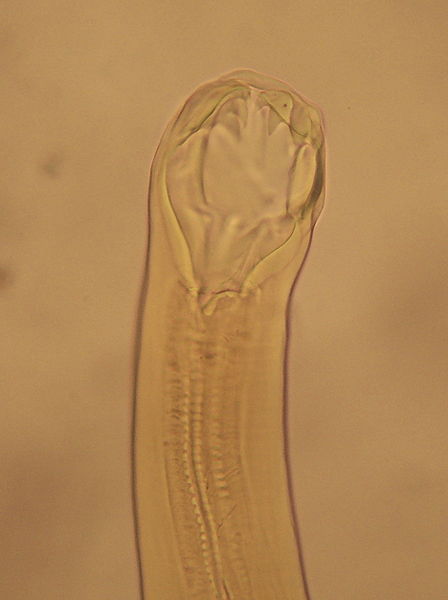Difference between revisions of "Category:Ancylostomatoidea"
Jump to navigation
Jump to search
| (12 intermediate revisions by 2 users not shown) | |||
| Line 1: | Line 1: | ||
| − | == | + | {{frontpage |
| − | + | |pagetitle =Ancylostomatoidea | |
| − | + | |pagebody =<div style="text-align: left; direction: ltr; margin-left: 1em;"> | |
| − | + | The superfamily Ancylostomatoidea contains the '''hookworms''', helminth parasites of importance to both humans and animals. The family is part of the larger Order Strongylida which also contains the [[Trichostrongyloidea]] and [[Strongyloidea]].<br> | |
| − | + | Hookworms mainly cause cutaneous disease in dogs ([[Hookworm Dermatosis]]) and man ([[Cutaneous Larva Migrans]]). </center></p align> | |
| − | + | |contenttitle =Content | |
| − | + | |contentbody =<big><b> | |
| − | + | <br> | |
| − | + | <categorytree mode=pages>Ancylostomatoidea</categorytree> | |
| − | + | </b></big> | |
| − | + | |logo = Ancylostoma logo.jpg|thumb | |
| − | + | }} | |
| − | |||
| − | |||
| − | |||
| − | |||
| − | = | ||
| − | |||
| − | < | ||
| − | |||
[[Category:Bursate_Nematodes]] | [[Category:Bursate_Nematodes]] | ||
Latest revision as of 19:07, 28 November 2010
Ancylostomatoidea
The superfamily Ancylostomatoidea contains the hookworms, helminth parasites of importance to both humans and animals. The family is part of the larger Order Strongylida which also contains the Trichostrongyloidea and Strongyloidea.
Pages in category "Ancylostomatoidea"
The following 5 pages are in this category, out of 5 total.
